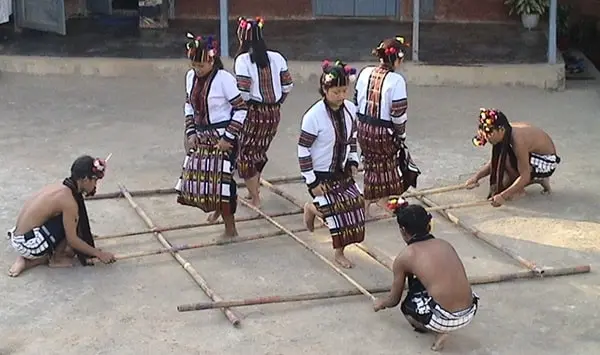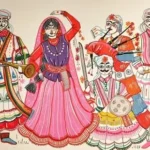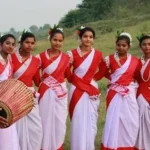The North Eastern part of the country is filled with rich culture, and there is no doubt about that. The thing that stands out the most about the culture in North Eastern states like Mizoram is the traditional dance forms that take place in special events and festivals. And if you are here just to know a little more about these traditional dance forms of Mizoram, then you are at the right place because that’s what we are onto today. Here we go.
Cheraw (Yeah, That Bamboo Dance)

Here we’re talking about a dance that’s been around since, believe it or not, the 1st century C.E. It’s Cheraw, but you might know it better as the Bamboo Dance. In this dance form, you might have seen dancers gliding slickly through snapping bamboo poles, right? Their moves? Totally in sync with those catchy bamboo beats. What’s really cool is how they do it in groups, showing off some super-coordinated steps that scream agility and teamwork. This dance form is more like a big-time celebration of, well, everything, especially at festivals like Chapchar Kut. And the costumes, oh, they’re a riot of color! Plus, the music? Absolutely gets you in the festive mood.
Khuallam
Okay, it’s also called the “Dance of the Guests.” This one’s a big hit at the Khuangchawi thing, that’s a ceremony, by the way. Now, this dance is mostly a guys’ show, and it’s all about the drum and gong beats. These boys and men usually wear their eye-popping traditional gear, literally bringing Mizoram’s culture to life. We’re talking vibrant, we’re talking elaborate, it’s like a cultural explosion, right there in their costumes.
Chheih Lam (Harvest Dance)
Yeah, this one’s a real gem when it comes to celebrating a rocking harvest season. It’s like the whole community coming together, overflowing with gratitude and all that joy. The scene’s pretty epic, you know? Dancers wearing these eye-popping, colorful outfits are moving in a rhythm that’s just mesmerizing. They’re circling around, totally in harmony with the kind of soothing tunes you’d hear from traditional instruments, like those cool drums and bamboo flutes.
Sarlamkai/Solakai
Now, let’s talk about Sarlamkai, or Solakai if that’s what you’re into. This dance is a big deal among the Pawi and Mara folks. You’ll see it light up the place at weddings and social gatherings, bringing that whole vibe of love and togetherness. The women in this dance, oh man, they move with such grace and elegance, while the men, they’re not just there for the show; they’re jamming out on their musical instruments. Sarlamkai’s all about celebrating the cool connection between the ladies and gents, creating this perfect harmony.
Chawnglaizawn
Now, Chawnglaizawn, it’s not just any dance. It’s like a deep, emotional journey, especially when a husband is out there performing it, mourning his wife’s passing. Yeah, it’s all about expressing that deep grief and holding onto those memories. But yeah, it’s not all sadness. This dance also pops up in festivals and, you know, to celebrate those big wins in hunting. It’s like this dance has got two faces, both somber and celebratory, which is pretty cool, right?
Tlanglam
Ever heard of Tlanglam in Mizoram? If not, you’re missing out! This one’s a real crowd-puller, and guess what? It welcomes everyone, young and old. They all get together, groove to the catchy Puma Zai tunes, and man, it’s a sight! It’s not just dance; it’s like watching the Mizo culture come alive, vibrant, and full of energy. Trust us, it’s something else.
Zangtalam
Then there’s Zangtalam, unique to the Paihte tribe. This one’s all about community vibes. Imagine this: everyone’s singing, and dancing to the beat of drums, and it’s all super dynamic and rhythmic. And the cherry on top? The dancers are all decked out in these eye-catching clothes and traditional jewelry. It’s not just a dance; it’s a feast for your eyes. Really, you gotta see it to believe it!
Conclusion
There you have it. Now, these traditional dance forms in Mizoram aren’t just for fun or to impress the gods or goddesses. Nah, they are the way to keep the community stronger and pass down the stories to the next generation, just like that has been for centuries now.
Santosh Kumar, the author behind IndiasStuffs.com, is passionate about sharing valuable insights on a variety of topics, including lifestyle, technology, and Indian culture.
Page Contents

